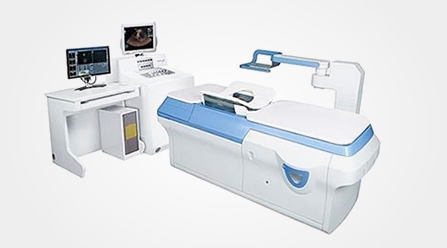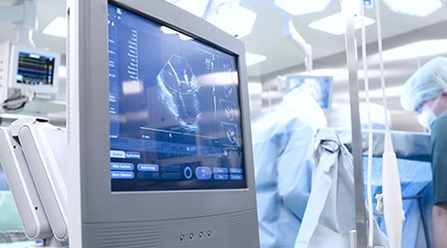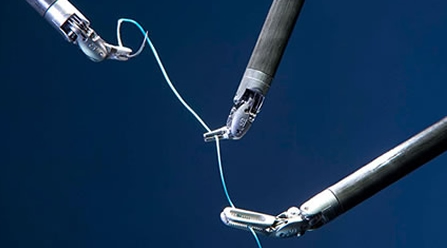How to live with prostate cancer

Recent diagnosis
You are probably here because you or someone you love has recently been diagnosed with prostate cancer.It is normal to have fears and questions. Please use this section to help guide and educate about prostate cancer.
Prostate cancer is usually slow growing but once you have been diagnosed, it is important to learn as much as possible, consider all your options, and create a plan. The five-year survival rate is nearly 100% so don't give up. Always talk to your doctor and thoroughly discuss the options available to you.
You can start here:
• Better understand the diagnosis
• Learn more about the treatment options available to you, as well as the advantages and disadvantages of each treatment
• Please feel free to ask any questions directly to Dr. David Samadi, via the contact specified on this website.
You are not alone.
Prostate cancer is treatable and manageable so you have to have hope and never give up.There are many options to explore, but the best way is always to educate yourself as much as possible and talk to your doctor to create a plan. Active monitoring and watchful waiting are essential.
A routine of close prostate cancer monitoring should be maintained through several scheduled tests such as PSA, DRE, and ultrasound. Prostate biopsies may also be options in order to make sure the cancer is not becoming more aggressive. Simply monitoring any changes in symptoms is a less intensive method that will help you decide what further treatment is needed.
There are several treatment methods for prostate cancer: surgery and radiation therapy. Once you have been diagnosed, it is vital that you work with your doctor to determine which treatment option is best for you.

Treatment options for men with prostate cancer include:

Radiation therapy
Radiation therapy refers to the use of high-energy X-rays or other types of radiation. Radiation therapy for the treatment of prostate cancer kills cancer cells or may limit the growth of these cancer cells.
When men are treated with radiation therapy for prostate cancer, they increase their risk of developing bladder and/or colon cancer by 2-5%. Radiation therapy can also cause impotence, urinary problems, and over time can lead to inflammation of the surrounding tissues.

CyberKnife
Although there is not enough long-term data available to support the effectiveness of this treatment, the CyberKnife robotic radiosurgery system is a nonsurgical procedure that delivers high doses of radiation to the prostate in several prostate treatment sessions called stereotactic body radiation therapy.
Side effects may include erectile dysfunction, urinary retention, and injury to the walls of the rectum or bladder.

HIFU
High Intensity Focused Ultrasound (HIFU) is a new and less known technique that applies heat (85°-95°C) to the prostate gland through an endorectal probe in order to destroy the cancer.
Due to the lack of data and history of this treatment, the true efficacy is still unclear.
With surgery, the doctor is able to obtain the most accurate classification of prostate cancer. The following surgical options are available:

Radical prostatectomy (OPEN)
Under anesthesia, an incision is made in the skin on the lower abdomen or perineum and the prostate cancer is removed. Sometimes lymph nodes may also be removed to be tested in a laboratory for cancer cells. This open surgery usually results in significant blood loss, a long and uncomfortable recovery, and carries a high risk of impotence and incontinence. This is not the preferred treatment for treating prostate cancer considering the available alternatives, for example, Robotic Laparoscopic Prostatectomy or Vinci Robotic Prostatectomy.

Laparoscopic radical prostatectomy (LRP)
One of the most common treatments for prostate cancer, which involves removing the prostate gland, is known as laparoscopic prostatectomy or radical prostatectomy. Traditional radical prostatectomy requires an incision of 20 to 25 centimeters. Under anesthesia, several small incisions are made in the skin and special surgical tools are used to remove the cancerous prostate. Using one of these tools equipped with a special video camera to provide the surgeon with direct visuals, the surgeon holds and maneuvers the other tools by hand and removes the cancer.

Robot-assisted laparoscopic radical prostatectomy (RALRP)
da Vinci Robotic Prostatectomy is the latest in minimally invasive surgery, offering the latest advances in robotics and computer technology to a patient with prostate cancer.
Robotic Prostatectomy incorporates a modern surgical system that enables a surgical procedure with low risks, minimal side effects and a rapid recovery for patients.
Although each patient is treated on a case-by-case basis, when choosing surgery, da Vinci robotic prostatectomy is the preferred method over all others.
Because it allows experienced surgeons, such as Dr. David Samadi, greater visibility, maneuverability and precision when removing prostate cancer and has the most important advantages for the patient, such as:
• Faster recovery
• Minimal transfusion
• Less cauterization
• Shorter hospital stay
• Keyhole shaped incisions
• Limited pain
• Minimal blood loss
• Low risk of infection
• Fast healing
• Small scars
• Minimal risk of manifesting
impotence or incontinence